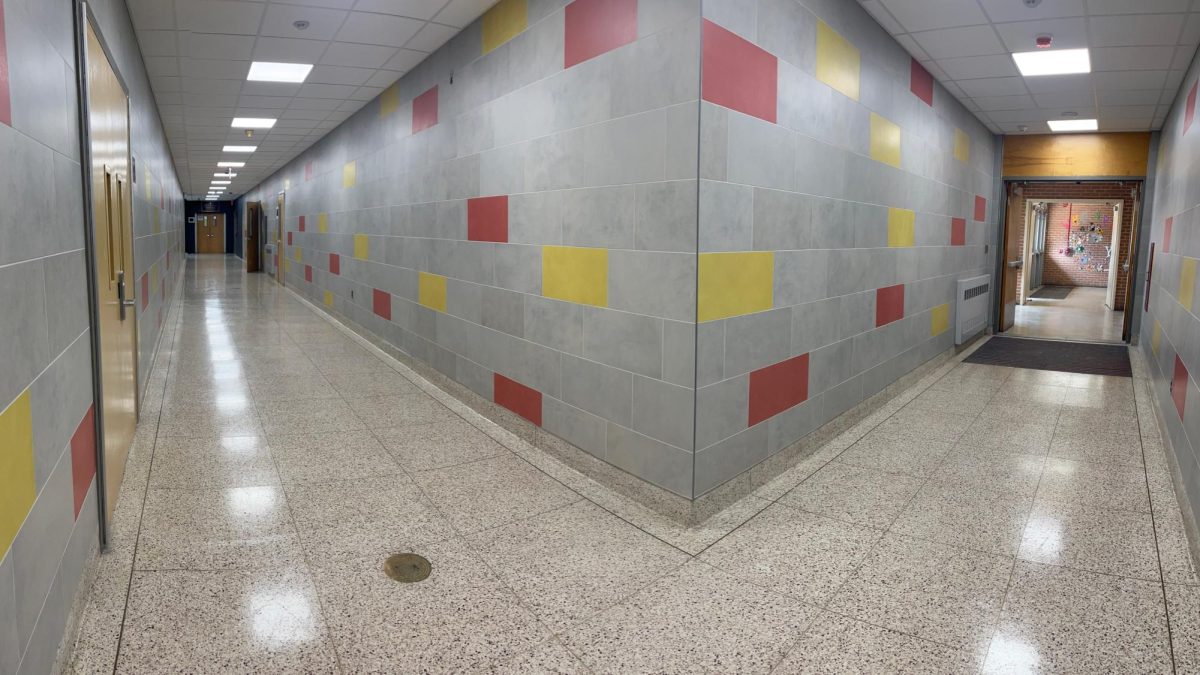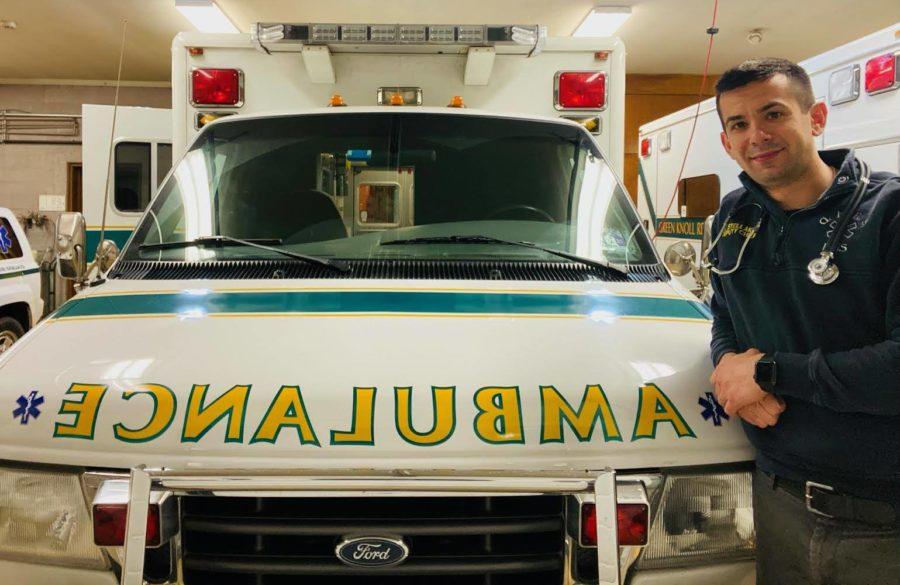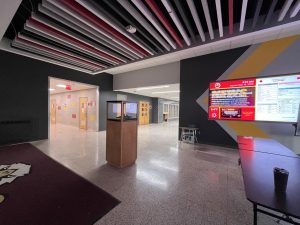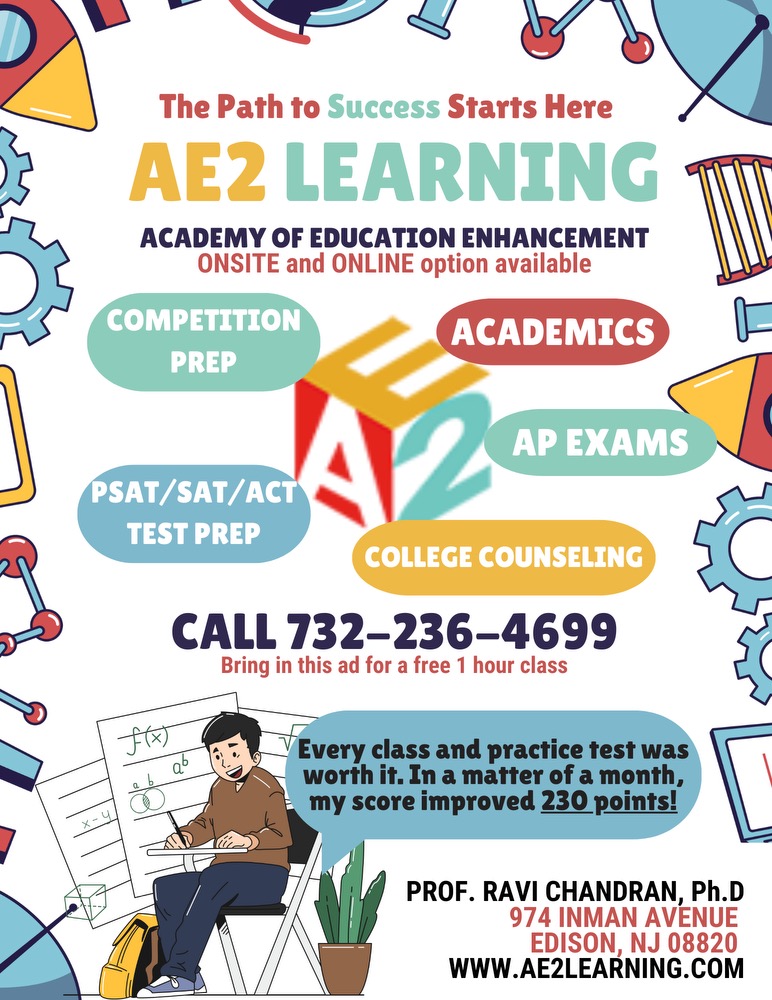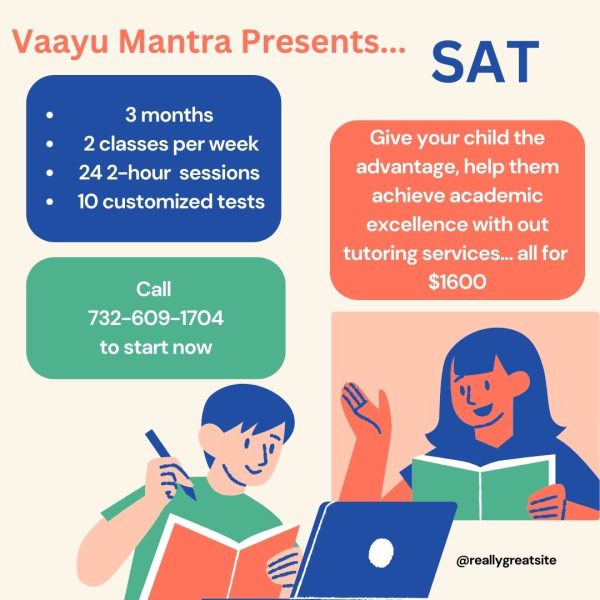Teacher by Day, EMT by Night: Stanley Stellakis
April 19, 2021
If you call 911 in Bridgewater, New Brunswick, or Somerset County, you might just see Science Teacher Stanley Stellakis running out from inside the rescue ambulance. Mr. Stellakis is an EMT, an Emergency Medical Technician, and he’s been working this job since he was 16. He says his own experience with EMTs in high school was “kind of inspiring” and led to him joining the South Plainfield rescue squad. At the time, he wished to pursue medical school. As the years went on, Mr. Stellakis decided that being at the front lines as an EMT was as far into medicine as he wanted to go, and he has stuck with this ambition.
Mr. Stellakis has a packed schedule: teaching science classes at Edison High School, volunteering for the Bridgewater EMTs every Wednesday night for a 6 pm to 6 am shift (and every third Saturday), while working for the New Brunswick EMTs every Saturday from 6 am to 6 pm. He is also an EMT Administrator in Somerset County, spending much of his time coordinating at this job, and working on-call all week, every six weeks. Though this may seem overwhelming to someone who has just started working at this pace, Mr. Stellakis has managed to create a schedule that works well for him. He emphasizes that “it is a delicate balance… and through years, 15 years, the stress of it doesn’t exist anymore because it’s become easy for me to be an EMT.”
“When my pager goes off… and there’s a kid that’s in need, I drop everything and make sure I’m running out there.”
Mr. Stellakis
“One of the biggest struggles for a younger EMT, or myself, is the emotional drain that [it] creates for people…,” Mr. Stellakis states. He emphasizes that “learning how to cope with those feelings… only comes with time and experience.” As an EMT during the pandemic, Mr. Stellakis has seen his fair share of intense situations. This year has been especially hard on many EMTs with the pandemic heavily impacting how they pursue their jobs as frontline workers. Further, as a coordinator in Somerset County, “aside from actually seeing patients, I was very heavily involved in conversations at the state level, and even at the national level in the beginning involving PPE… breaks… covid outbreaks, [etc].” This past year has been a challenging experience for Mr. Stellakis and the rest of the EMS teams in the nation, but one that has employed each and every skill they have.
Throughout all his years, to Mr. Stellakis, the most meaningful calls are those with children. “When my pager goes off… and there’s a kid that’s in need, I drop everything and make sure I’m running out there,” Stellakis said. As a father of two children, a daughter and a second child on the way, Mr. Stellakis says these calls stick with him more than any others.
“I find a great amount of value in seeing people and helping people on their worst day, and when someone has to pick up the phone and call 911, no matter how trivial it might seem to me, that’s that person’s worst day.”
Mr. Stellakis
This is a hobby that Mr. Stellakis “truly enjoys”. When asked why he has continued to work and volunteer as an EMT for all these years, he explains, “I find a great amount of value in seeing people and helping people on their worst day, and when someone has to pick up the phone and call 911, no matter how trivial it might seem to me, that’s that person’s worst day.”
Finally, Mr. Stellakis shares advice for students looking to become an EMT: “1) talk to someone who has a lot of experience in Emergency Medical Services to ensure it would be a good fit. 2) Join a local rescue squad as a cadet. Typically, all rescue squads have cadet programs, and they will let you ride a few hours a week to observe, provide training in CPR, basic First Aid and how to use a lot of the equipment, and give you a basic sense of what the commitment of being an EMT is like. In addition, many rescue squads have programs that help pay for your EMT class, which can be quite expensive.”

























